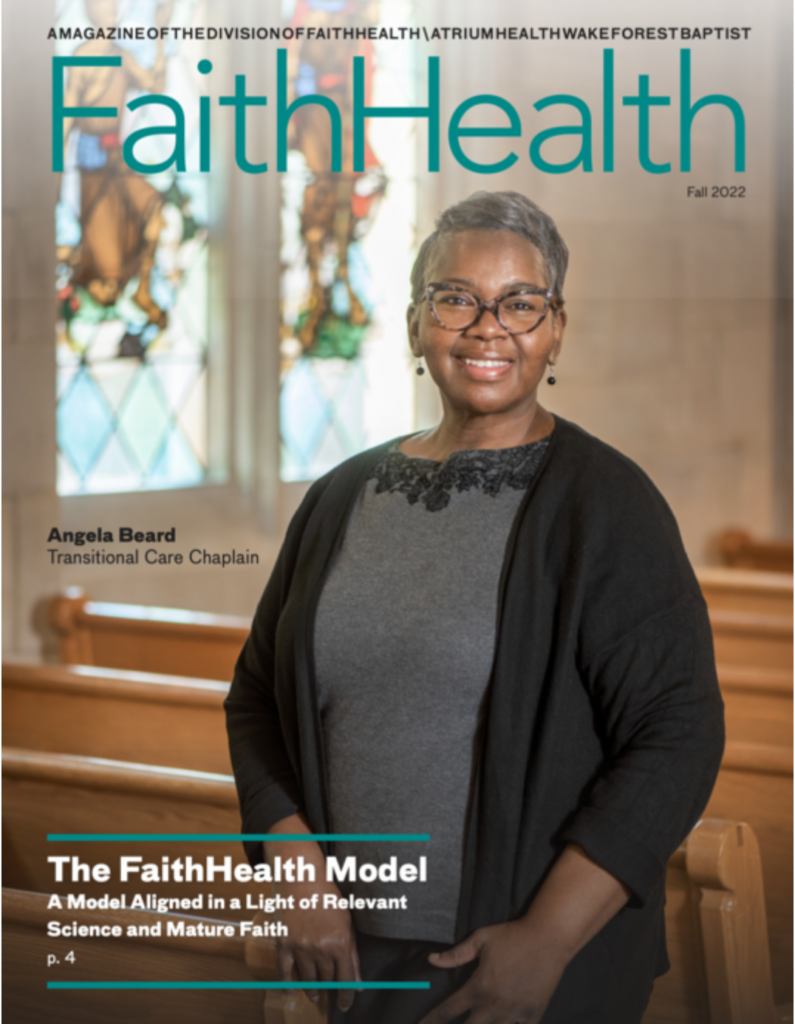By Gary Gunderson
North Carolina sticks dangerously far out into the Atlantic Ocean, so we pay close attention to hurricanes and how they move. The vortex of swirling winds seems like it could bludgeon its way anywhere it might want to go. Actually, those winds go where greater forces allow. They are pulled, more than pushed, by “steering currents.” That’s what you watch.
We learn from pain and things we fear. Dr. Jonas Salk figured out how to eliminate polio by knowing the virus so intimately he could imagine how it spread. Then he asked whether health could also spread like an epidemic! He began to think of himself as a positive viral agent. We can learn from hurricanes, too, beginning with the role of steering currents.
Hospitals have millions of square feet and billions of dollars of technology. Sometimes we think we could do anything we want. But without steering values and relevant science, we just spin in place. Watch the steering current. It is drawing us into very unprecedented places these days along with churches, government, media, schools and anything social. We are all being steered into alignment. Although none of us is powerful enough to organize it, we are becoming part of each other’s systems. And this is happening fastest where the stormy social conditions are the hottest, the problems drawing us across old boundaries.
A small spinning storm of values and science
Hurricanes are deadly because of everything they do, not just the wind OR rain OR storm surge OR tornadoes. FaithHealth is powerful the exact opposite way. It’s the whole thing, not this or that program. It’s the trust engendered by kind-hearted faith, the practical tenacity of the Samaritan, the empathy amid the trauma, the audacity of building massive institutions, the constant curiosity about what might be possible and the humility to do just one more right thing to help some stranger. That whole tumbling swirl crosses over any boundary to do good.
Hurricanes are hard to predict from one day to the next. But they follow patterns and seasons in which small storms in the African Sahel turn into the largest natural weather phenomenon thousands of miles away — every year. FaithHealth begins with a small spinning storm of values and science that rides social currents and sometimes grows into a massive phenomenon capable of creating hundreds of billions of dollars of hundreds of hospitals. That’s why there’s a hospital on Hawthorne Hill in Winston-Salem. An even smaller thing happened in the 1840s when a single Episcopal laywoman started two mustard-seed hospitals in Charlotte (one black, one white) that grew up to be Atrium.
Today the currents of values and science are blowing in a new direction. Health organizations (hospitals, clinics and public health) are moving beyond the era of high-tech interventional medicine into complex engagement with social, psychological and spiritual drivers. Once, we could draw the line at fixing the broken arm; now we cannot ignore what we know about the interpersonal violence that broke it — and the signals of even more damaging wounds. Once, we had empathy with the emotional damage suffered by the young; now we know those “adverse childhood experiences” shape health problems decades later in the form of high-cost chronic and debilitating conditions. We have to act. We once felt sorry about babies born into poverty; now we know that the patterns of poor nutrition and anxiety before age 3 are nearly impossible to reverse later. We have to act.
Programs built to fix things find there is no end to fixing. Medicaid, designed to help the health of the poor, ends with an endless array of targeted medical interventions to fix the bodies of those “at risk of risks.” The poor are prey to every negative process in our towns and neighborhoods — bad schools, sanitation, housing, food, safety, transportation, employment. Even the churches tend to be tattered, some from over (and some under) use. We now know how to score these stressors of adverse experience. A score of more than six (out of a possible 20) predicts many times higher rates of diabetes, depression and other chronic conditions in middle age. Of course, it does. We have to act in entirely new ways.
You could stand on the roof of Baptist Hospital right where we put the world’s largest Moravian star on Christmas and see every bit of this going on in the neighborhoods below — the very same neighborhoods where these deadly swirling currents recreated another generation of poor conditions 40 years ago. We will never catch up with the damage. Are there any steering currents that lead toward life, fullness, hope and health?
A good place to start would be exactly where the Baptists did a hundred years ago, facing a similarly daunting array of social disruptions. They created two institutions in the very same meeting: the Children’s Home and the hospital. Both were intended to be extensions of the church into medicine and social work. The linkage worked the other way, too. The hospital had a nursing school with each nurse assigned to a local congregation to bring medical science into its ministries with the most vulnerable. That is still a good idea, essentially the logic of FaithHealthNC in a mustard seed.
FaithHealth is one word precisely because science and faith are inseparable in the phenomenon we call life. You can describe a lifespan using the language of health indicators or by using more spiritual terms — meaning, awe, lament and faith. The new science steers us back into human complexity in which every broken elbow has biomedical, psychological, social and spiritual facets best dealt with in an integrated way. And the struggle of faith — especially at the congregational level — steers us back toward Jesus’ model of constant failure to look away from the bodies crying out for healing, the demons screaming for release, the loneliness of the stigmatized and unforgiven.
Religious scholar Martin Marty once noted that Jesus spent a third of his time healing. Looking through today’s science helps us recognize a more complex weave of bio-psycho-social-spiritual drivers of shalom. Jesus spent 98 percent of his time doing FaithHealth and beckons us to do the same. That’s why the Baptists invented a hospital in the early 1900s. It’s why there are faith-based hospitals of every faith in every corner of the world.
The steering currents
The steering currents draw us to learn the arts of generativity, not just fixing bad things. This forces us to turn around, as currently all the “helping professions” are organized around an ever-more-detailed list of things gone wrong. A hospital electronic medical computer has 87,000 codes for the conditions we will try to fix (and charge for). The problems compete, fracturing our attention, time and money amid a goose chase of appointments, billings and big boxes of expensive pills.
The steering currents are not entirely new. Jesus didn’t offer healing in the sense of a reversal to a previous state. You don’t go back in life. Rather, he offered freedom to align our life with generosity and generativity. This was — and is — abundance of such degree that you never need to measure it whether talking of healing, forgiveness, mercy or justice. It’s not a miracle; it is moving with the most fundamental current of life.
All humans heal and hurt in different seasons as we are born, die and live all along the way, dependent on the kindness of others, especially in these hard-hearted times. Jesus started by healing the disconnection, the original adverse experience of human separation from each other and our source of life. The season of vitriol makes it seem smart to bet on short-term politics, perverse business models, stealing from health-creating work to build bigger barns of privilege. Foolishness, said Jesus along with every prophet and grandmother for 4,000 years. In the spirit of the prophet Micah, we know where to steer: love mercy, do justice and work with a kind and humble heart. Anything else is sinking sand.
Maybe we are being steered toward communities in which it is normal to be connected with such grace and generosity that we could all expect that in our moment of dependency we could count on the human and institutional networks to help us toward the right door (and unlock it). And help us recognize the right time in our struggle to get there (diabetes, depression and gunshots being different). And help us be ready to be a partner with those ready to heal (having our bag of pills and paperwork). And that we’re already in relationships of trust that we knew were part of the human systems of life, never alone.


